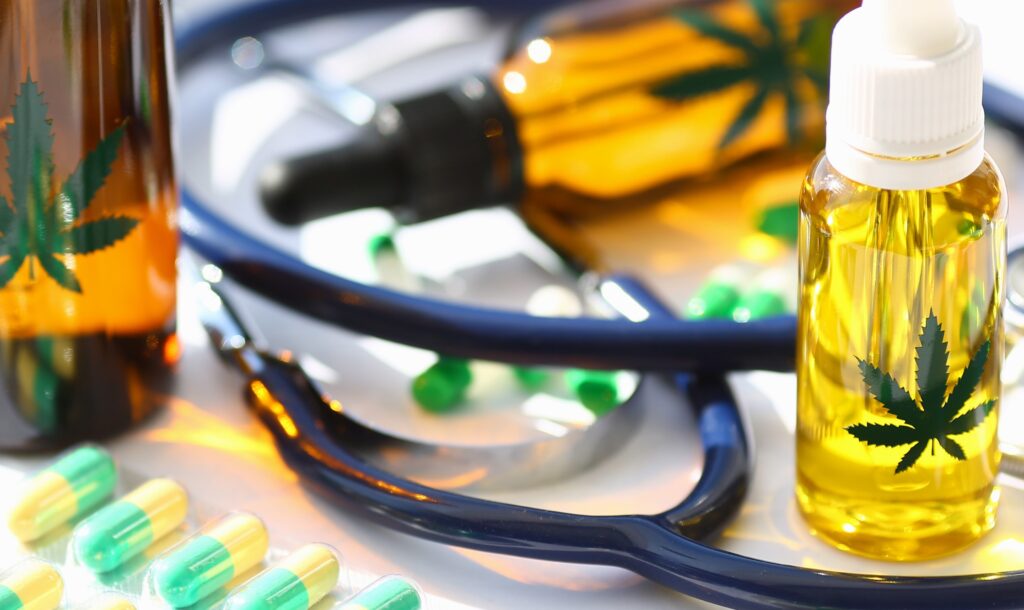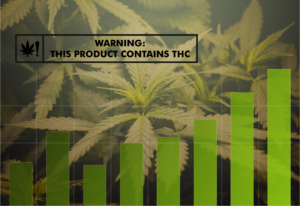New analysis of New York data finds considerable variability in patient product choice, even for patients with the same condition.
Due to a lack of publicly available data, understanding what products medical cannabis patients use for various conditions has mostly come from survey responses. In a new study, USC Schaeffer Center researchers established a clearer picture by analyzing point-of-sale data from nearly 17,000 patients who made more than 80,000 purchases as part of the New York state medical cannabis program.
The researchers found considerable variation in the products chosen for most medical conditions, and high variability in labeled doses of THC.
“While the medical cannabis market is not new, there is still relatively little research on patient purchasing behavior,” says Alexandra Kritikos, a postdoctoral research fellow in the USC Schaeffer Center and the USC Institute for Addiction Science. “Unfortunately, our analysis suggests that patients may not be getting consistent guidance from clinicians and pharmacists and, in many disease areas, there seems to be a lack of clear clinical data on appropriate dosing.”
The results, published in JAMA Network Open, rely on purchases made between 2016 and 2019 when cannabis flower and edibles could not be sold in the medical market. Cannabis card holders could purchase vape cartridges and pens, capsules and tablets, tinctures, lotions and suppositories.
Medical cannabis users purchase a range of products with varying potencies
Since its inception in 2014, New York’s medical cannabis program has grown to 150,000 participants, making it one of the largest in the nation.
Using data from an integrated single system of dispensaries, the researchers found that the top three conditions patients recorded on their medical card were chronic pain (52%), neuropathy (22%) and cancer (13%). In addition to a qualifying condition, patients also needed a qualifying symptom to register. The top qualifying symptoms were severe pain (82%), severe muscle spasms (21%) and severe nausea (8%).
Vaporizers were the most popular product purchased (40%), followed by tinctures (38%) and tablets (22%).
In terms of potency, the majority of products purchased (52%) were high-THC, low-CBD products. High- THC products contained between 2 and 10 mg of THC per dose, depending on the product.
Given this variation, when patients chose different products, they presumably favored different dosing. For example, 41% of patients with chronic pain preferred a high-THC vaporizer, which delivered 2 mg of THC/0.1 mg of CBD per dose, while 33% of chronic pain patients chose tinctures and 25% chose tablets, both of which delivered 10 mg of THC per dose. Another quarter of chronic pain patients chose a product containing 5 mg of both THC and CBD.
In contrast, the majority of patients suffering from cancer, HIV/AIDS and epilepsy purchased the same product, suggesting similar dosing.
Physicians need to take a more active role in patients using medical cannabis products
Earlier research found that electronic medical records frequently underreport the number of medical cannabis users. Combined with findings in the new Schaeffer Center study, the researchers suggest improving medical guidance and oversight of dosing.
“We suspect the lack of clinical guidelines on dosing of cannabinoids for particular medical conditions has made medical providers uncomfortable talking to their patients about their medical cannabis use,” says Rosalie Liccardo Pacula, senior author on both studies. “It is imperative that this change, as drug interactions with other prescribed medications are likely but impossible to identify if medical cannabis use is not considered or recorded in the medical record.” Pacula is a senior fellow at the Schaeffer Center and the Elizabeth Garrett Chair in Health Policy, Economics & Law at the USC Price School of Public Policy.
Pacula and Kritikos hope that their study provides a basis for conversations between providers and patients about cannabis use, including dosing levels.
Calls for caps in the recreational market will not limit access for medical cannabis patients
According to the labeled dosing, none of the most popular products analyzed for any of the conditions had dosing of more than 10 mg of THC, something policymakers should consider, say the researchers.
“We’ve seen the industry and media make the claim that putting caps on potency would limit access to necessary medicine,” Pacula says. “But our research in New York state suggests that medical cannabis users are consuming products that are less potent than what recreational users take.”
A white paper published by the Schaeffer Center in July discussed how policymakers could legalize recreational cannabis while still putting regulations in place that prioritize public health.
Funding for this study was provided in part by a grant from the National Institute on Alcohol Abuse and Alcoholism (award number 5T32AA007567).




